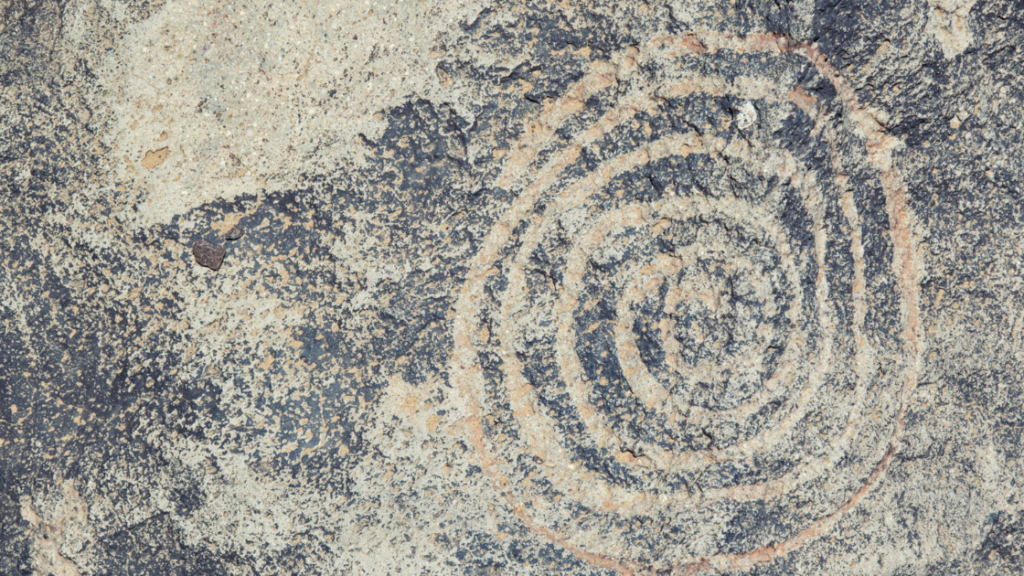The Story Behind the Petroglyphs: Ancient Symbols of Albuquerque
Ancient carvings etched into volcanic rock at Albuquerque’s Petroglyph National Monument date back up to 1,000 years, offering a glimpse into the lives of Indigenous peoples who once roamed these lands.
What do these symbols reveal about the beliefs and stories of their creators? For history buffs, locals, and Southwest explorers, these petroglyphs hold invaluable clues to a rich past.
In this blog, we’ll explore their meaning, significance, and the importance of preserving this cultural heritage.
What Are Petroglyphs?
The Basics of Petroglyphs
At their core, petroglyphs are rock carvings etched by ancient peoples onto stone surfaces. Using tools like stone chisels or hammerstones, they created these images by pecking through the rock’s outer layer to expose the lighter stone beneath.
These carvings weren’t just decorative—they often carried deep meanings tied to the culture, spirituality, and daily lives of their creators.
Petroglyphs Around the World and in Albuquerque
What makes petroglyphs fascinating is their universal presence. They can be found across the globe, from the deserts of Australia to the cliffs of Norway. Yet, Albuquerque stands out as a special site, boasting its own unique style and story.

The Petroglyph National Monument in Albuquerque is home to over 24,000 of these ancient carvings, making it one of the largest accessible collections in North America.
Managed by the National Park Service, this monument offers a rare opportunity to experience these historic carvings up close, right in the heart of the American Southwest.
The History Behind Albuquerque’s Petroglyphs
The Ancient Peoples Who Created Them
The petroglyphs found in Albuquerque were created by the ancestors of today’s Pueblo tribes and other Indigenous peoples who lived in the region. These carvings date back as far as 1,000 years, with some continuing into the early Spanish colonial period.
For these ancient communities, the rocks were more than landscapes—they were canvases for storytelling, record-keeping, and spiritual expression.
Cultural and Spiritual Significance
Each petroglyph is more than just an image; it holds cultural and spiritual significance. Many symbols were carved to mark sacred spaces, honor ancestors, or depict ceremonies and beliefs.
Common motifs include animals, spirals, and celestial figures, all reflecting a profound connection to nature, spirituality, and the cosmos. These carvings tell the story of a people deeply tied to their land and their traditions.
Decoding the Symbols: What Do the Petroglyphs Mean?
Common Themes in Albuquerque’s Petroglyphs

The symbols carved into Albuquerque’s rocks are as varied as the stories they tell. Spirals are a recurring motif, often associated with ideas of journeys, cycles, or the sun.
Animal depictions, such as birds or snakes, might relate to hunting, spiritual beliefs, or clan symbols. Human-like figures could represent deities, ancestors, or cultural heroes. Together, these images form a complex and fascinating visual language.
Challenges in Interpretation
However, interpreting these symbols is not straightforward. Deciphering the exact meanings behind these carvings can be challenging without written records.
It’s crucial to approach this task with respect and an understanding that some meanings may only be fully understood by the Indigenous peoples to whom these symbols belong. Respecting these perspectives is key in uncovering and preserving their true significance.
The Petroglyph National Monument: A Living History
What You’ll See at the Monument
Located on the western edge of Albuquerque, the Petroglyph National Monument spans over 7,200 acres and is home to tens of thousands of carvings etched into the volcanic rock formations.
Visitors can explore popular trails such as Boca Negra Canyon, Rinconada Canyon, and Piedras Marcadas Canyon, each offering unique insights into these ancient carvings.
Preservation Efforts and Challenges
Preserving this cultural treasure requires ongoing effort. The National Park Service works tirelessly to mitigate vandalism, natural weathering, and urban expansion threats.
Protecting these symbols ensures that future generations can continue learning from and connecting with this rich cultural heritage.
Visitor Information
If you’re planning a visit, early mornings or cooler months are ideal times to explore. Be sure to wear sturdy shoes, carry water, and respect the site by staying on designated trails and avoiding physical contact with the carvings.
Why Petroglyphs Matter Today
A Cultural Bridge Between Past and Present
The petroglyphs are more than relics for modern Pueblo peoples and other Indigenous communities—they are vital links to their ancestors. These carvings help preserve their heritage, allowing younger generations to stay connected to their culture and history. They serve as a bridge, fostering a sense of continuity between the past and the present.
Preserving Indigenous Narratives
Indigenous voices must lead the interpretation and storytelling of these symbols. Cultural sensitivity in tourism, educational programs, and academic studies plays a crucial role in ensuring that these narratives are preserved and shared with respect.
Visiting Petroglyphs: Tips and Etiquette

When visiting the petroglyphs, remember to tread lightly. Stay on designated trails to avoid damaging sensitive areas and keep your hands off the carvings to preserve them for future generations.
If possible, consider participating in Indigenous-led tours or educational programs that provide deeper insights and support local communities.
The Future of Albuquerque’s Petroglyphs
The future of Albuquerque’s petroglyphs lies in community involvement and education. Local and federal organizations continue to invest in preservation projects to protect these symbols from threats. By raising awareness and fostering appreciation, we can ensure that these ancient stories remain part of Albuquerque’s cultural landscape for generations.
Albuquerque’s petroglyphs are not just historical artifacts—they are a living testament to the resilience, creativity, and wisdom of the people who first called this region home. Whether you’re a history enthusiast, a curious local, or a tourist passing through, their story is one worth exploring and preserving.
